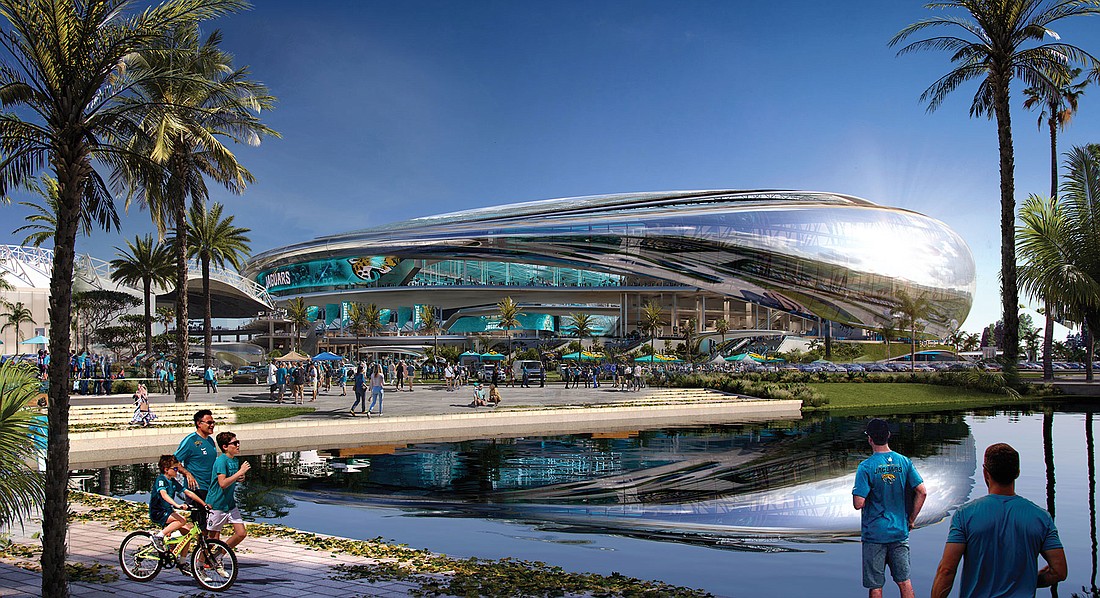
The Jacksonville Jaguars began their public pitch June 7 for what could be a $2 billion public-private investment to renovate TIAA Bank Field and build a mixed-use neighborhood in the stadium district.
After the NFL team released a conceptual video and renderings online showing a revamped stadium with a shade canopy and new mid-rise and high-rise development west of the facility, Jaguars President Mark Lamping met with reporters to make the case that the effort is more than a better football stadium.
“If we can have a downtown that is not that dissimilar to cities that are similar in size, that are smaller (and) that are larger (than Jacksonville), that have downtown cores that serve as economic engines to generate revenue that is invested throughout the community, particularly in those underserved neighborhoods, that’s the real goal here,” Lamping said.
“And it’s not just the Jaguars. It’s not just the stadium of future project. It’s everything that’s going on in Jacksonville.”
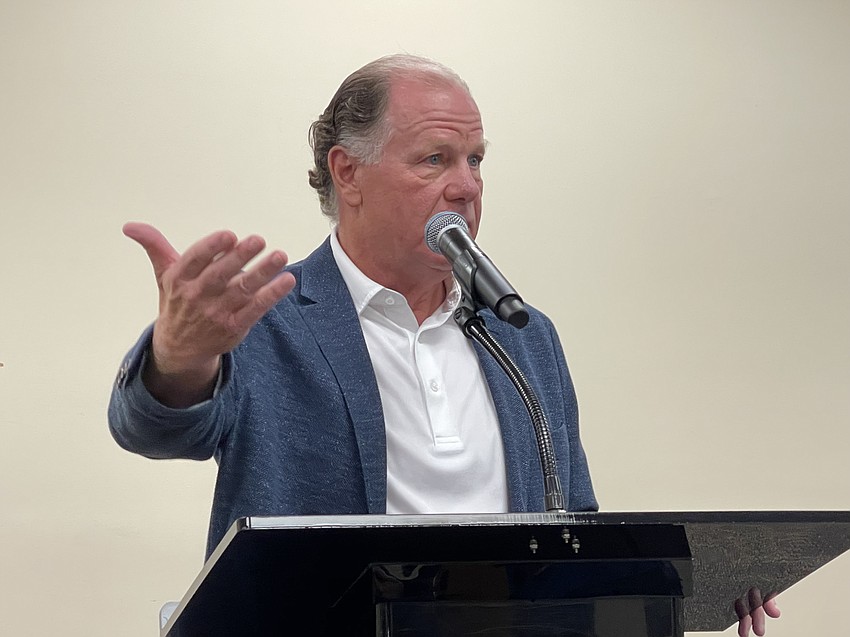
Lamping and architects from St. Louis-based design firm HOK took questions about the stadium announcement at the team offices at TIAA Bank Field.
The announcement and 14 community meetings scheduled to start June 12 to present the designs come as Lenny Curry leaves office and Mayor-elect Donna Deegan takes over City Hall on July 1.
Jaguars owner Shad Khan and his executives will start stadium negotiations with Deegan’s administration with a deal framework in place.
An investment summary from the city dated May 11 says rough cost estimates for the stadium improvements could be $1.2 billion to $1.4 billion with the city paying $800 million to $934 million for nearly two-thirds of the project.
Cost estimates for the mixed-use development around the stadium are $550 million to $668 million with the city contributing $75 million to $100 million.
A draft memorandum of understanding between the city and Jaguars dated May 24 says “the Jaguars cannot consider an extension to the current lease” on the city-owned facility without “a long-term resolution to the current stadium situation and the surrounding property.”
The memorandum of understanding proposes that stadium construction start in February 2026 and be completed in July 2028.
Lamping cautioned that the financial summary was prepared as part of a transition briefing for Deegan’s team and could change.
He said the summary reflects the Jaguars philosophy of a 50-50 split when investing in city-owned buildings in Jacksonville.
An email chain from the city shows current Chief Administrative Officer Brian Hughes sent the documents to Deegan’s transition team members June 1.
Lamping said the stadium design presented on Jaguars website 1stdowntownjacksonville.com would be an estimated $1.3 billion to $1.4 billion project.
Deegan responded in an email:
“It’s a beautiful vision for economic revitalization. Infrastructure, especially in our older historic neighborhoods, will be one of the key priorities of my administration,” she said.
“I look forward to the coming negotiations and a deal that is good for taxpayers which keeps the Jaguars in Jacksonville for generations to come.”
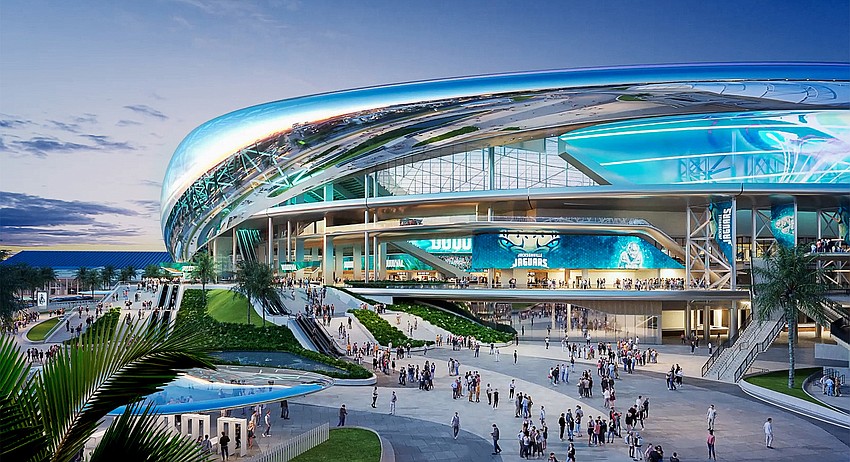
The design
The online presentation June 7 ended the Jaguars’ three-year, $2.6 million stadium design planning.
HOK Principal Peter Broader said “fan experience became front and center” in developing a plan for the renovations.
The plans show a shade canopy that will reduce the heat factor in the city-owned stadium by 70%. Broader said it would be stationary, not retractable, and open air.
The stadium entrance would have a “tropical Floridian park” at the entrance and a concourse that is three to four times wider than what is at the stadium today.
HOK’s design would double the number of concession and food vendors, and the upper concourse will run 360 degrees around the venue, he said.
The concourse will be raised 30 feet above ground level to enhance view of the city and St. Johns River.
The stadium will have 62,000 seats for NFL games and can expand to 71,500 to accommodate the TaxSlayer Gator Bowl, the annual Florida-Georgia game and other college-level sports events.
Although the stadium size would expand, Broader said the renovation would not take a larger land footprint. The plans call for removing the existing ramp towers to allow the concourse expansion.
To move fans inside the stadium, the design calls for 32 escalators and 14 elevators.
In addition to fan surveys, Lamping said the Jaguars consulted with the universities of Florida and Georgia and event and concert promoters to determine their needs.
Lamping said the Jaguars want a renovated stadium to be a draw for international soccer events, the NFL Draft and to position the Gator Bowl to attract a College Football Playoff expansion game.
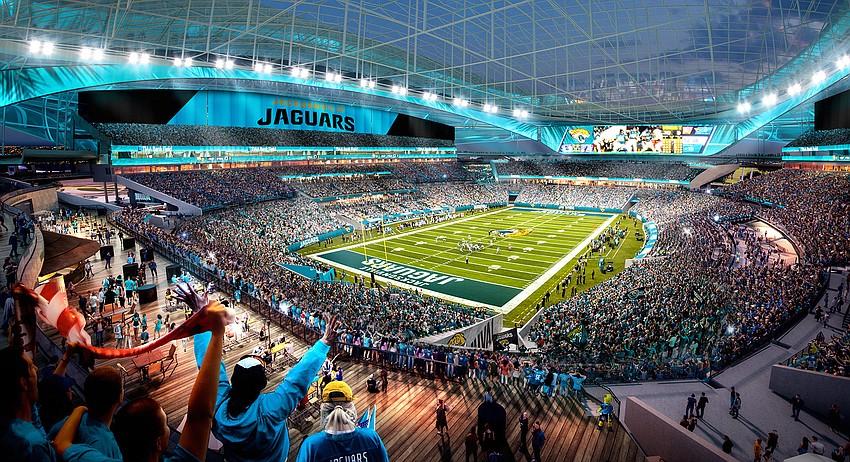
Deal framework and MOU
The Jaguars posted the MOU on the 1stDowntown Jacksonville website June 7.
It confirms the Jaguars are working to secure a proposed University of Florida graduate satellite campus for the Jacksonville Fairgrounds site next to TIAA Bank Field and integrate it into the proposed mixed-use development.
Iguana Investment Florida LLC, Khan’s development company, is under contract to buy the fairgrounds from the Greater Jacksonville Agricultural Fair Association.
The memorandum of understanding says Khan would donate the 14.1-acre fairgrounds site to UF if the school chooses it for the campus.
The Jaguars are asking the city for the master development rights to parking lots J, P, TT, N, M, H and V in the stadium complex and a parcel on the city-owned shipyard site.
Lamping said outside development would be “365 neighborhood” that would have places for people to live and for fan entertainment before, during and after stadium events.
Khan failed to win financial support from City Council in January 2021 for a $450 million mixed-use project at Lot J near the stadium.
Iguana is developing a $387 million Four Seasons-anchored hotel and office building project on the riverfront property south of the stadium. As part of its deal hotel deal with the city, the Jaguars have a Right of First Offer on the parcel indicated in the memorandum of understanding.
There is little detail on how city officials would pay for what will likely be the biggest single infrastructure project in Jacksonville’s history.
The memorandum proposes creating a special taxing district that would include all new development outside the stadium in the Sports and Entertainment Complex that could fund city debt service on the project and future stadium capital needs.
Lamping said the Jaguars have retained public financing expertise when drafting the memorandum with the city.
The draft memorandum states that the document is nonbinding, but the proposed development timeline would finalize the deal framework in June before Deegan takes office.
The Jaguars want a final agreement with the city in March 2024 to secure approval from the NFL by May 2024. Early work could start in February 2025.
“We are evaluating the framework and working with the Office of General Counsel and Council Auditor to review all prior agreements regarding the stadium and stadium-area developments,” Deegan said in June 6 statement.
“As I have said previously, when it comes time for negotiating, we will bring in a team that is experienced in negotiating this type of deal with the NFL. We’re not there yet. Our end goal remains the same. A deal that works for taxpayers, the Jaguars, and the NFL.”
The team plans to negotiate a lease renewal and the stadium deal simultaneously, Lamping said. But the Jaguars want the resolution “well in advance” of its 2029 season, when the team’s current lease expires.
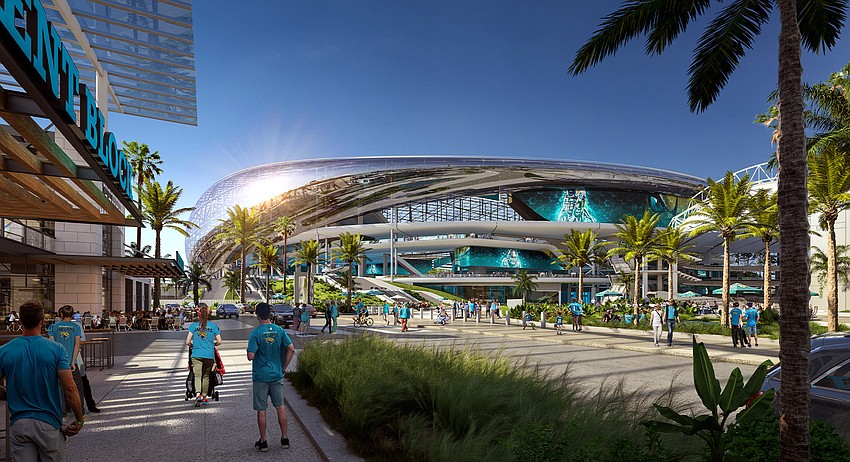
Play during construction
While the stadium is under construction, the Jaguars could play away from TIAA Bank Field for the 2026 and 2027 seasons.
Lamping said the team has considered Ben Hill Griffin Stadium at the University of Florida campus in Gainesville and Camping World Stadium in Orlando.
The Jaguars and the city could pay $125 million to $130 million to retrofit 121 Financial Ballpark Downtown or Hodges Stadium at the University of North Florida to seat about 30,000 spectators to allow the team to play in Jacksonville during construction.
Lamping said start-and-stop construction at TIAA Bank Field would stretch stadium renovations over four years, reduce seating capacity and cost $190 million.
The Jaguars prefer the shorter timeline, he said.
“We know what we want to build. You saw it today,” Lamping said.
“We have a good idea of what it’s going to cost. It’s going to cost somewhere between $1.3 and $1.4 billion, but we don’t know if that’s what the city wants. And we don’t know if that’s what the community wants.”